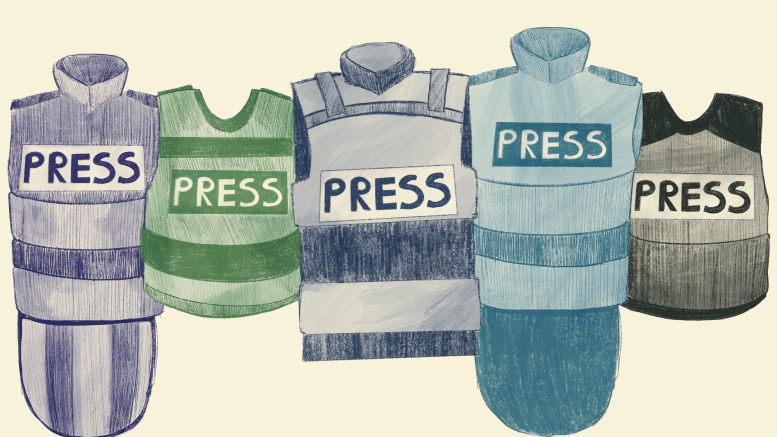According to the Committee to Protect Journalists, at least 48 journalists and media workers reporting on events in northern Gaza were confirmed dead as of Nov. 19, 2023. These killings have occurred during what the former director of the New York office of the UN high commissioner for human rights calls the genocide happening in Palestine.
I keep thinking about what the lives of the remaining journalists are like. I think about them living in a country exploited by settler colonialism and western extraction, losing family members, sometimes finding them in the rubble covering a once beautiful city, and continuing to work, being brave and sharing with the world what happens in Gaza.
In thinking about journalists and media in Gaza, I am reminded of the work of philosophers like French critic and theorist Roland Barthes.
Barthes writes in his essay collection Image Music Text that photographic images can be paradoxical. According to him, the photograph is a denoted message. It communicates “objective” reality to the viewer. It’s like an unencrypted message.
However, for Barthes, the photograph also carries a connoted message. This message is more like commentary that society makes about itself. So not only do photographs literally communicate what reality looks like, photographs also communicate interpretations of reality. In other words, connoted messages are coded, unlike denoted messages.
To put this in perspective, the photographs that come from Gaza denote the images of people resisting violent settler occupation, but they connote suffering. Today, we have videos, Instagram lives and so many other means to receive news. Therefore, the denoted and connoted messages are not confined to Barthes’s understanding of photographs. Things are more complicated now.
However, I want to focus on Barthes’s idea of the connoted message because I’m interested in understanding the reasons that have caused people like the United States’ president Joe Biden to doubt the Palestinians’ reported death tolls in Gaza. He did so despite the live reports that Palestinian journalists share with the world, risking their lives every day as they do. Why would any country have an X handle in the first place and tweet like a chronically online person?
In a news video published by CNN that has since been edited, a journalist goes inside a hospital in Gaza with Israeli forces. An Israel Defense Forces spokesperson explains the terrorist connection to the hospital by pointing to a “guard list” pasted on the wall written in Arabic.
This was soon found to be a blatant lie, because that list was just a calendar that had days of the week written on it.
Why was it easy for people to believe the first narrative? There is a connoted message to Arabic letters in post-9/11 North America, and that message is shaped by Islamophobia, or the belief that things associated with Islam are bad.
Model Bella Hadid said she lost jobs because she voiced support for the Palestinian cause, while actor Noah Schnapp was publicly promoting stickers that read “Zionism is sexy” without facing any consequences. There is even a connotation in the political affiliation of a successful person of colour and a white male attempted actor.
Considering most of these examples were shared with the world through videos and photos, the paradox of the co-existence of denoted and connoted messages is, in the case of Palestine, that both denoted and connoted messages are coded. North American media encodes those messages with its classic Islamophobia, whiteness and settler-colonial history.
So the question really is, would you rather believe the unbelievable Israeli government, which has an interest in the gas and resources of the land it occupies, or would you believe people, real and true, who are sharing news with the world while being continuously bombed? Which is the connotation you are interested in believing?
I have been following journalists like Plestia Alaqad, Hind Khoudary, Wael Al-Dahdouh, Motaz Azaiza and Saleh Aljafarawi for quite some time now, and I see these people alternating their jobs between journalist and rescue operator. Wael Al-Dahdouh’s wife and two children were killed by the Israeli forces at the Nuseirat refugee camp on Oct. 25, but he continued to cover the tragedy of the Palestinian population.
The day I’m writing this column, Nov. 17, marks 41 days of the siege on Gaza and 75 years of colonialism, apartheid and what the Center for Constitutional Rights argues is genocide. The denotation and connotation of these messages, of people getting injured, dying and losing family members should be that we need an immediate ceasefire.



